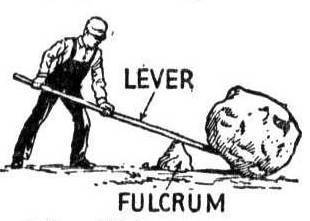https://youtu.be/B7iFQWYQwEM A MOVING FULCRUM IS NOT A FULCRUM, see image. I think I will remain in solidarity with my Ph.D. Engineer, and Tai Chi Master Stephen Hwa. I am constantly meeting students who are calling a "lever" a "fulcrum" and then there is the "OUCH" factor:
A student quoted and then asked: "I have a quote, "The hips are the fulcrum of the body and connect the upper with the lower.” (https://citylifestyle.com/los-angeles...) Explain why Master Hwa thinks that the hips should remain less mobile than the waist".
A response from Sifu James Roach: How can people say things like "ALL of the movements are generated by the hips first, not the waist," "turn your hips, etc. This is something that can put a very painful torque in the knees. This refrain and misunderstanding of the hips role indeed appear prominent and quite vocal in studying the large frame Tai Chi Style. The hips are a large and complex joint of the body and, like any joint, are necessary for movement. They are necessary for movement but not sufficient to power or "generate" movement. In other words, they do not move in and of themselves but move as a result of action initiated by other parts of the body.
Stating that they are "the fulcrum of the body and connect the upper with the lower" still is not a sufficient explanation of what powers or "generates" their movement. A crowbar at its bend ) is also a fulcrum but without a source of power "generation," it is just a metal bar. What exactly is the mechanism that they use to move in and of themselves? There is no such self-perpetuating mechanism in the hips wherein one can "generate movement."
The hips "permit," "allow," "tolerate," "provide for" movement, but they do not "generate movement generation of movement for our hips comes either from our legs or from our waist and not from the hips themselves. See the attached video for examples of what happens when practitioners turn hips and waist simultaneously. In large frame Tai Chi, the movement of the legs to turn the hip is "folding the hip or Kua." A leg pushing the body either forward or backward makes one hip rotate into itself, and the other rotate out of itself, hence the inguinal "fold' so coveted by large frame practitioners.
As far as "Power" is concerned, one will reduce or drain off power when turning the "hip first" (which, as we said, is impossible because it does not generate its movement). Keep the hip still and then turn the hip "first," and you can readily see the difference in the "generation" of power. The hips can rotate forcefully in a large frame once the legs push the body and reach the apex of a weight shift. As we have stated previously, however, power drains after rotation. The compact frame does this by pulling.
In contrast to pushing, pulling moves are internal and stay energized. Energy is not lost but constantly recirculated and not dependent on legs for power. Talking about "fulcrums" is of prime importance as to how one locates or places a working fulcrum. In the video, one can see the turning of hips lowers the yin/yang junction (fulcrum) to an area of the knees. In the background, one can readily see several practitioners of "external" style Tai Chi turning their bodies at the hips, lowering the junction to the area of the knees in the mistaken impression that "generating movement by the hips first and not the waist" can be used to "turn the body."
Master Stephen Hwa, Ph.D. says: "The most important instruction on Internal Discipline passed down from Wu Chien Chuan to my teacher Young Wabu is that": "Every movement in Tai Chi Form has to have two complementary parts of the body, a moving part (called Yang) and a stationary part (called Yin). When the yin-yang junction locates in the torso of the body, it is an internal move. When it is outside the torso, it is an external move".







No comments:
Post a Comment